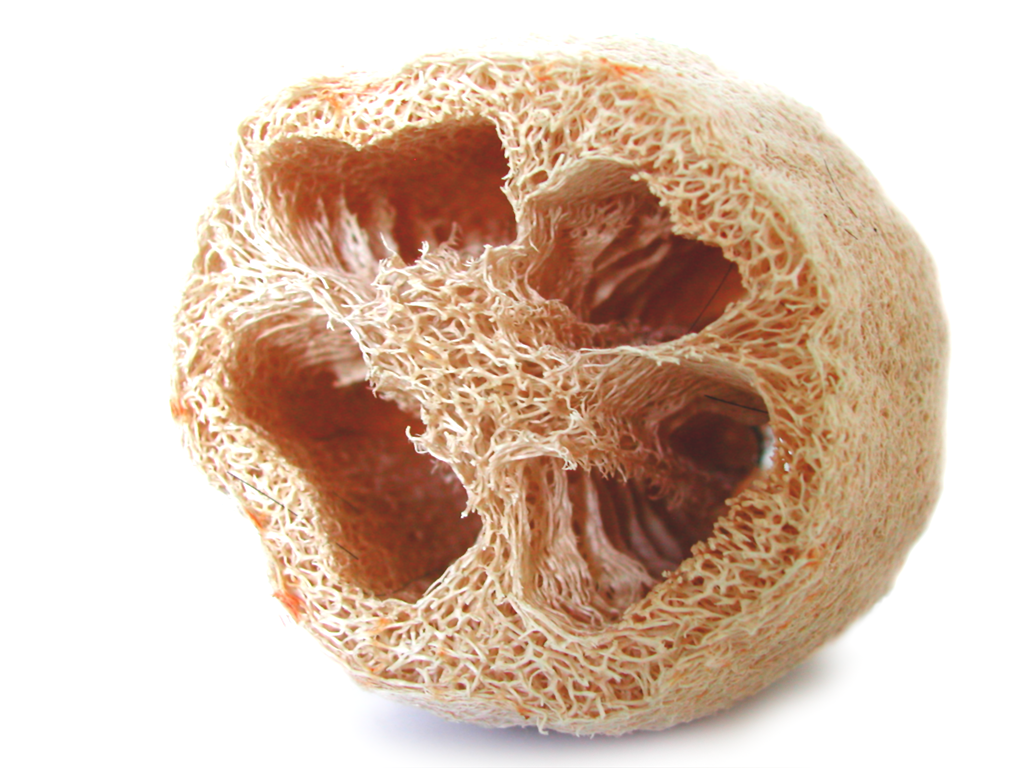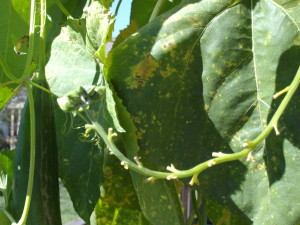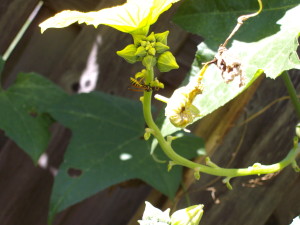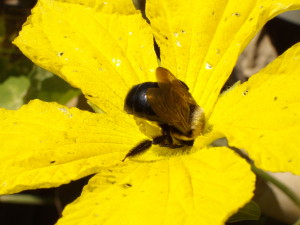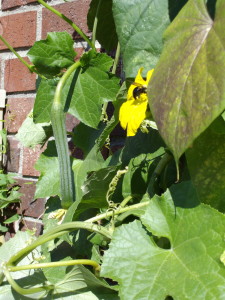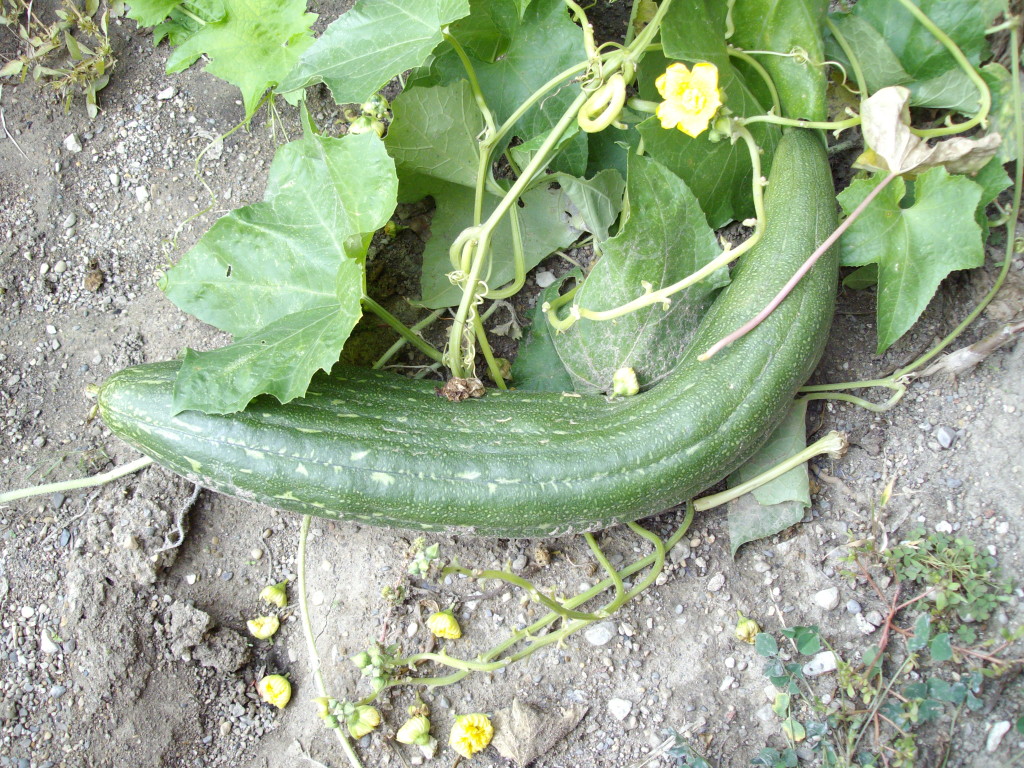How many of you use a luffa in the shower? Most of us have at one point in another, or at least we’ve seen them. They have a rough texture, so they are often used to slough away dead skin cells.
Luffa are often referred to with a misnomer of “luffa sponge”. Did you know it’s not a sponge? It’s actually a gourd that originated in the subtropical regions of China and Vietnam. While I was teaching in China, I actually ate the luffa quite often, though I thought it was a “funny textured cucumber” at the time.
OK, so it wasn’t that funny of a texture, just a little bit harder than an English cucumber that I’m used to. It was also amazingly versatile and tasty, but that could have been the MSG talking.
Growing luffas
Honestly, I didn’t think luffas were a plant until I saw the package of seeds sitting there innocuously. The begged me to pick them up and give them a try, so I did. I plopped 5 seeds into a starter tray, and waited. Soon, I had these tiny little plants, that grew up fast — really fast. They turned into monstrosities that tried to take over my apartment building in just a month.
Despite of their rapid growth and lots of beautiful yellow flowers, we didn’t see any sign of luffa growing on the vines. This is because the ants would chew through the stems of the flowers to get at the nutrient rich juices underneath. In the process of doing this, they chewed off all the flowers.
Chewing off all the flowers gives you an unsightly vine like the one above. Each of those nubs was at one point a flower and a potential luffa gourd. The ants systematically chew off every flower they can get a hold of.
Oh, we tried stopping them. I put Sevin on the flowers as per directed by Trav’s father, a horticulturist and very successful fruit farmer. That worked — for a while — with the unpleasant side effect of killing anything else too. Within a month, the ants were back. We tried ant traps, a little more Sevin near the base of the plant, and even smacking them off. Finally, we were fed up with the process and decided it was going to be a loss for this summer and we had plans to flush the ants over the winter.
Then, Travis discovered a lovely surprise. The wasp nest which we had neglected to get rid of came as a boon. Apparently the paper wasps hunt and kill ants! Oh, happy, happy day. We found a solution to our ant problem!
It’s actually quite amazing, too. The wasps hatched right along the fence where the luffas were planted, then they got buried amongst the leaves. We had forgotten about it until the wasp babies came out in force and started nomming heartily on the ants.
Beyond this, though, did you know that paper wasps have facial recognition abilities? I had wondered why no matter how many times I had gone out to the garden and started mucking about in the nearby plants, I had never once gotten threatened, nor did they fly away from me. Apparently they recognised me, and didn’t see me as a threat.
After the wasps started tending to our garden with us, we started to see more flowers. With more flowers came a lot of bumble bees that were practically drunk with nectar. After a few weeks of this, we noticed a lot more flowers, and a lot more bumbles.
Turns out luffa, bumbles and wasps all do better when it’s warm and moist, so every time it rained, we’d get more flowers, more bumbles hanging off every flower, and more ants. With more ants we had more wasps coming out and flying around happily with ants in tow. This side of our garden became a veritable hub of activity starting in early August but we still didn’t see any luffas!
Nature, it seems, is not expedient enough for my whims. Luffas take about 140 days to mature in warm, moist weather. We had a lot of hot, dry weather, so it was slowing down progress. Finally, after what seemed an eternity to me, I spied a luffa!
A little green, ugly gourd that was too long and thin to be a proper cucumber appeared. And then more started to become obvious to me.
Nature takes too long to get to this point of satisfaction. I must have gone out there every day to see how many luffas I’d have that I could then make into “sponges” that would be added to spa sets. By late September I had only 4 that I could see, but I had not braved the Wasp and Bumble Paradise yet. Seriously, would you disturb a buffet for critters that could sting you? Bumbles are not nearly as nice as the paper wasps, and I had gotten stung by them just because I went near them to collect clothes from the line.
However, even by the end of September I had three luffas that were the size of my forearm and one about the quarter of their size. It looked like we had potential for a lot more, too, as long as the wasps and bumbles kept up their end of the bargain. One time would tell how many I’d have by the end of the season, and if luffas taught me nothing else, they taught me Nature can take her sweet time about things no matter how much you want to see the results.
Now, it’s the middle of October, and I don’t think the luffas are going to grow much more. It’s far too cold for them to really get much growth going. Not that I can complain much about that. They are huge now, and I will be able to make lots of shower luffas from them.
All that is left to do now is wait until the frost when I can start the harvest and work through processing them. But that will be another post.
